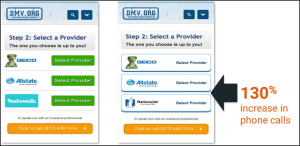Location data offer a goldmine of insights that marketers cannot afford to ignore.

Location intelligence and marketing platform xAd announced this morning that it has developed a new data visualization and location insights tool called “MarketPlace.” It offers “actionable visual insights into foot traffic behaviors in the physical world.”
Also today, on a more light-hearted note, Placed identified the favorite local businesses and chains frequented by Trump and Clinton supporters. These are just the latest in a recent string of announcements from digital marketing and analytics platforms about how location intelligence is being used for targeting, business intelligence and analytics.
In the space of little more than a week, Pinterest, Google and Facebook announced new or expanded initiatives to connect the dots between digital media and offline consumer behavior. In addition to those three, xAd and Placed, there are well over a dozen companies that are doing similar things for mobile display or cross-platform display: Foursquare, NinthDecimal, YP, UberMedia, Swirl, Verve, PlaceIQ, Factual and others.
For years, people associated “local” with small businesses and assumed that it was a niche segment or a difficult and not-very-lucrative market. National advertisers and brands generally had trouble localizing and so ignored it for the most part. Some marketers continue refer to local as a “vertical.”
It’s not. As I’ve argued for more than 15 years, local and location-based marketing are really about consumer behavior and reaching and influencing consumers before they buy (most things) offline. It’s many times larger and more important than e-commerce.
You’ve undoubtedly heard numerous times that roughly 92 percent of US retail sales happen in physical stores. In 2015, approximately $4.8 trillion in retail spending happened offline. That compares with roughly $350 billion in e-commerce in 2015. Beyond this, the services economy is several times larger than retail. Trillions and trillions of dollars more are spent on services offline (restaurants, entertainment, professional services, healthcare, home services, automotive and so on).
The internet now touches most of these transactions in one way or another: business NAP lookups, maps, reviews, product or provider research and so on. In other words, the internet (and mobile) now impacts literally trillions of dollars in offline purchases — the mass of the iceberg that marketers don’t usually see. That’s why Pinterest, Google and Facebook, among others, are developing or expanding offline attribution.
Google, Facebook and several others are also trying to go beyond “mere visits” and track the impact of actual sales from ad exposures. It almost goes without saying that the implications of having visibility into offline consumer behavior are dramatic:
- Campaigns (keywords, creative, channels, publishers) can be optimized based on offline actions.
- Media planning becomes more efficient by exposing which channels (digital and traditional) are actually working (vs. clicks/impressions).
- Offline data can be used for online retargeting and personalization.
- Location history operates as a kind of cookie for audience segmentation and targeting based on real-world actions.
- Location analytics offer competitive and operational insights.
The one significant caveat here is location data accuracy, which can be uneven. Some sources, publishers and networks are more accurate than others. But that’s a separate, longer conversation.
The larger point is that the challenge that has always made people think of local/location as a “niche” — marketers couldn’t see or measure the majority of internet-driven transactions happening offline — is now going away, thanks to mobile devices and the increasing transparency of real-world consumer behavior.
All this is why, other than ad blocking and fraud, location is the hottest topic in digital marketing — and rightfully so.
Marketing Land – Internet Marketing News, Strategies & Tips
(23)
Report Post








